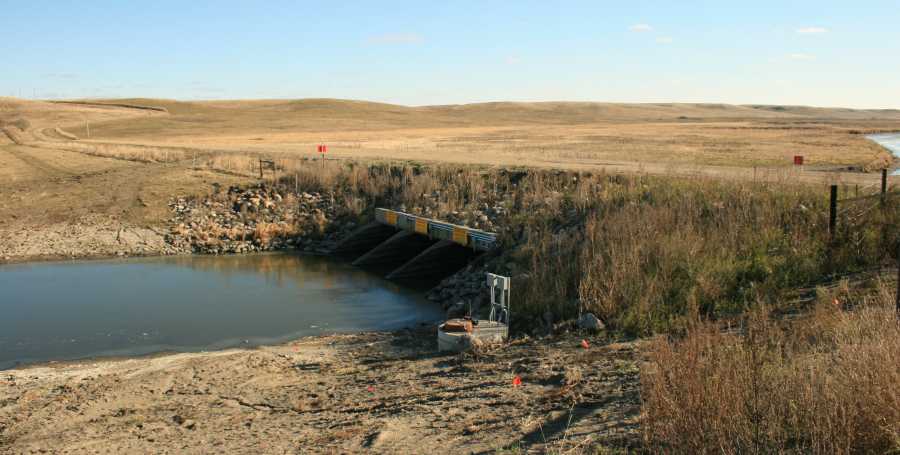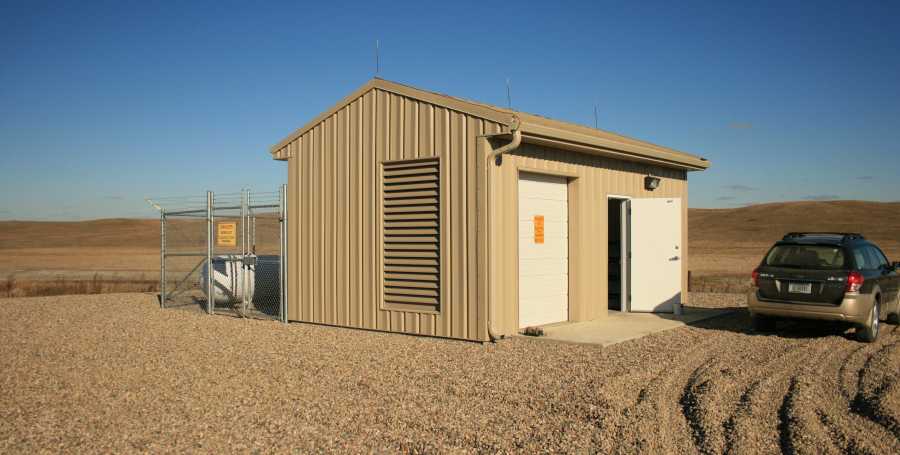Arrowwood National Wildlife Refuge
Smith-Root designed a barrier to be retrofitted into an existing three-cell culvert to stop invasive fish.
- Location: Jamestown, North Dakota
- Commissioned: 2006
- Type: Lake
Project description
This culvert is located in a shallow valley with very little gradient. The water is typically slow to still, and can reverse direction with wind changes. The Smith-Root proposal included dewatering, lining the culverts with HDPE, attaching U-shaped steel flat bar electrodes, connecting to electronics housed on higher ground some distance away, and supplying a water surface jetting system to push fish downstream.
The barrier produced the required field and kept the invasive carp from moving. The water jetting system proved to be unsatisfactory mainly due to clogging of the pump intakes with vegetation and small fish, and it was abandoned.
In 2009, a record spring flood completely covered the culvert and submerged the control building three feet. Ice movement through the culverts damaged the liners. In 2010 the building was moved to higher ground and repaired, and in early 2011 the lining was replaced by a spray-on polyurethane coating. Another record flood in 2011 kept the entire culvert and roadway under water until November.
Services provided
- Coordination with the owner U.S. Fish and Wildlife
- Full drawings for construction
- Electrical and electronic design of the pulsators and power supply systems
- General Contracting for barrier construction
- Supply of electronics
- Regular maintenance, and repairs from flood damage
Site characteristics
- Pulsators: 1.5kVA POW
- Pulsator Qty: 12
- Power Output: 18.0kW max.
- Water Depth: 4 feet max.
- Waterway Width: 12 feet (per culvert)
- Water Velocity: 0-1 ft./s
- Conductivity: 1400 µs/cm max.

